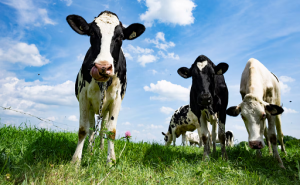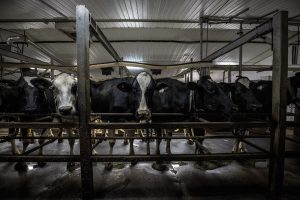
Trump’s New Tariffs Threaten North American Dairy & Broader Agri-Food Chains.
The global agribusiness landscape is facing renewed uncertainty as the U.S. has announced a significant escalation in its trade policy. Effective August 1, the U.S. will impose a 35% tariff on all imports from Canada, a substantial increase from previous duties. This move, delivered via a letter from U.S. President Donald Trump to Canadian Prime Minister Mark Carney, signals a more confrontational approach to international trade, potentially reshaping supply chains and impacting dairy economics across North America and beyond.
The stated rationales behind this steep tariff include concerns over the flow of fentanyl from Canada into the U.S., alongside longstanding grievances regarding Canadian trade barriers. Specifically, the U.S. has targeted Canada’s supply management system in the dairy sector, citing what it describes as “extraordinary Tariffs” of up to 400% on U.S. dairy products. This accusation, despite Canada’s position on tariff rate quotas under CUSMA, highlights dairy as a key point of contention in bilateral trade relations.
Beyond Canada, the U.S. administration is also contemplating broad, blanket tariffs of 15% to 20% on most other trading partners. This wider strategy underscores a shift towards increased protectionism, with potential ramifications for global commodity markets, food manufacturing, and international trade flows. Such measures are designed to address perceived trade imbalances and national security concerns, according to the U.S. President.
The escalating trade tensions have already seen Canada retaliate against previous U.S. tariffs, and the current announcement includes a warning that any further retaliatory duties from Ottawa would result in additional tariff increases from the U.S. This tit-for-tat approach could severely disrupt established cross-border supply chains for various agricultural products and processed foods, increasing costs for both producers and consumers.
For the international dairy community, these tariffs represent a significant risk. While Canadian experts suggest direct U.S. tariffs on Canadian dairy might have limited impact due to Canada’s supply management and low U.S. import volumes, the broader instability could affect investment and market access. The situation calls for vigilance among dairy producers, manufacturers, and analysts as the August 1 deadline approaches, potentially ushering in a new era of global agri-food trade challenges.
Source: Reuters: Trump puts 35% tariff on Canada, eyes 15-20% tariffs for others
You can now read the most important #news on #eDairyNews #Whatsapp channels!!!
🇺🇸 eDairy News INGLÊS: https://whatsapp.com/channel/0029VaKsjzGDTkJyIN6hcP1K






















